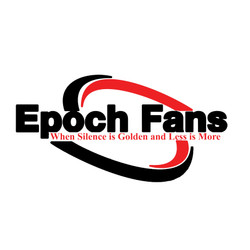The sprawling layouts of industrial and commercial facilities, essential for efficient operations involving manufacturing, processing, and warehousing, present a challenge in terms of heating and cooling efficiency. While HVAC systems efficiently deliver heated or cooled air to designated areas, their optimization often requires more than routine maintenance. The addition of a high-volume, low-speed (HVLS) fan network emerges as a key solution.
HVLS ceiling fans play a crucial role in cooling facilities, and their benefits become even more pronounced during colder seasons. Before delving into these advantages, it's important to understand how HVLS fans contribute to maintaining cool and highly efficient working environments.
Summer Comfort:
Worker well-being holds significant importance, with studies consistently showing that physically uncomfortable employees are prone to distractions and errors, especially under extreme conditions like heat fatigue or heat stroke. HVLS fans are increasingly prevalent in industrial settings nationwide, offering substantial benefits whether or not air conditioning is present. In non-air-conditioned facilities, the impact of HVLS fans is particularly noticeable.
In contrast to smaller, traditional floor-mounted fans with potential issues such as high wind speed, noise levels, and elevated electricity consumption, HVLS fans operate with low energy consumption. They provide a gentle, quiet breeze that greatly enhances worker comfort. This calm airflow significantly influences the perceived temperature for employees.
According to the U.S. Department of Health and Human Services, an airspeed of two to three miles per hour creates an evaporative cooling sensation of seven to 8 degrees Fahrenheit. To put it into perspective, introducing a fan moving air at three miles per hour in a 38-degree warehouse environment can effectively lower the perceived temperature to 30 degrees, increasing worker productivity by up to 35%.
A large 24-foot diameter HVLS fan for warehouses efficiently moves substantial volumes of air across up to 22,000 square feet, replacing 15 to 30 floor fans. By facilitating air mixing, HVLS fans contribute to the improved efficiency of air-conditioning systems, allowing them to operate at a set point up to five degrees higher.
Warming Up with Destratification:
During the heating season, there's often a significant temperature difference between the floor and ceiling in manufacturing plants and warehouses, typically exceeding 20 degrees. This results from warm air rising and cold air settling, with air temperature increasing by one-half to one degree for every foot in height.
HVLS ceiling fans counteract the rising heat effect by gently redistributing warm air near the ceiling back down towards the floor, creating a more uniform air temperature with minimal variation from floor to ceiling. This destratification process significantly reduces the burden on heating systems, leading to energy savings and cost reduction.
Conventional high-speed ceiling fans lack this destratification effect, as they are ineffective in moving warm air from ceiling to floor. In facilities equipped with traditional ceiling fans, the full benefits of the HVAC system are seldom realized on the floor.
Saving Energy and Money:
Due to their efficient operation, HVLS fans often achieve a return on investment within six months to two years, though this timeline can vary based on application variables.
Valuable Investment for Any Season:
Regardless of the season or specific temperature-controlled application, HVLS fans offer numerous benefits. They not only enhance environmental control for worker comfort and product protection but also do so with less energy consumption and hassle compared to traditional high-speed floor fans.
Learn about our Fan Technology here:
Please call us toll free to discuss your requirements at +1 877 278 6323 or text at +1 571 781 2453

